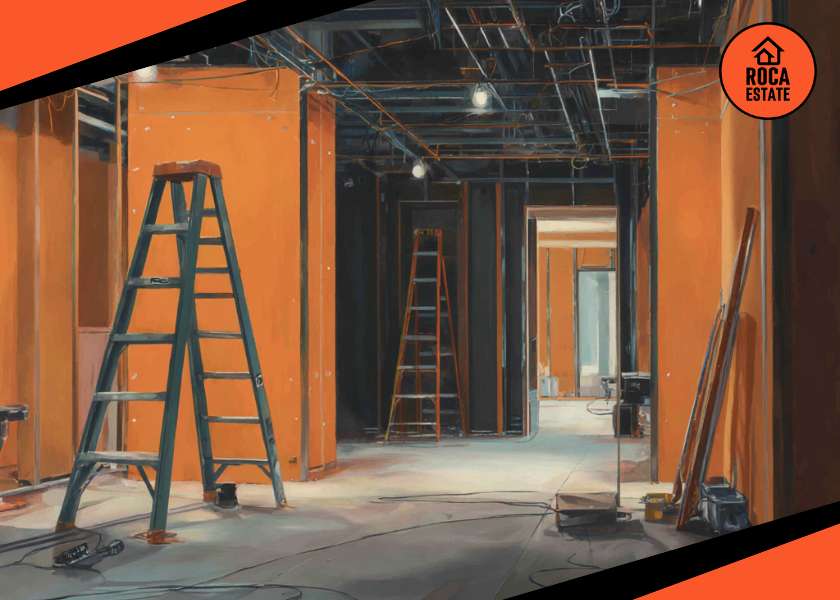Portugal’s housing market has long attracted investors seeking stable yields and consistent appreciation. However, the introduction of the ambitious “Construir Portugal – New Strategy for Housing” is set to significantly alter the dynamics of the market. With nearly €4.2 billion earmarked for housing development and a plan to construct around 59,000 new homes by 2030, investors must brace for considerable pressure from the supply side. This substantial increase in housing availability, focused especially in Portugal’s major urban and coastal regions, will inevitably reshape property price trends. For investors considering a “buy and hold” approach for capital appreciation, understanding the implications of this new program is crucial.
Official Budget Allocation and Funding Sources
“Construir Portugal” is backed by both European and national funding to expand housing. A core element is leveraging Portugal’s “Recovery and Resilience Plan“ (Plano de Recuperação e Resiliência) funds, which already provides €1.4 billion in funding for 26,000 new public housing units by 2026. In addition, the government has committed substantial state budget resources to go beyond these EU-funded projects. Approximately €1 billion in public expenditure is earmarked to build 25,000 extra homes on top of the PRR units. This additional investment will be phased over several years (extending past the PRR’s 2026 deadline) and is funded through the national budget in coordination with the Ministry of Finance. In fact, by late 2024 the government approved a €2.011 billion boost (from the State Budget), bringing the total additional housing investment to about €4.2 billion beyond what was initially planned. This combined funding strategy is aimed at more than doubling Portugal’s public housing stock – targeting roughly 59,000 new homes by 2030 (versus the 26,000 originally planned under the PRR).
Key Measures and Policies in the Strategy
The “Construir Portugal” program comprises 30 measures addressing the housing crisis. These measures are grouped into several strategic pillars, focusing on boosting housing supply, expanding public housing, restoring confidence in the rental market, aiding young homebuyers, and simplifying housing regulations. Notable policies and actions include:
- Encouraging Housing Supply: Mobilize idle resources and ease construction. The government will make public properties available for housing development (via build-to-rent public-private partnerships) at affordable rents. A new “semi-automatic” legal regime lets municipalities or private partners propose housing projects in underused or vacant public buildings, fast-tracking their conversion into homes. There is also a planned change to the Land Law allowing the use of rural land for affordable housing solutions – such as controlled-cost homes, accessible rentals, temporary accommodation, or housing for essential workers (teachers, police, agricultural and tourism workers) – which were previously restricted uses. To stimulate development, a building bonus will relax urban density limits for projects that offer controlled-price housing, affordable rentals, or temporary lodging. Additionally, the government is creating new credit lines for build-to-rent projects and even a state-backed credit guarantee scheme to support housing cooperatives building on public land. An agreement (or “pact”) with construction sector agents is also envisioned to boost building capacity and attract skilled labor, ensuring the industry can ramp up housing production.
- Promoting Public Housing: A major goal is to significantly expand the stock of public and affordable housing. The strategy calls for unlocking 25,000 dwellings under the PRR that are in the pipeline, speeding them up by letting city councils certify projects to accelerate funding and construction. Beyond the EU-funded units, the State will finance additional projects so that “no viable housing project is left out”, according to the Infrastructure Minister. By supplementing PRR funds with national budget money, the government aims to deliver nearly 59,000 new public housing units by 2030. The program also supports housing cooperatives and municipal initiatives – for example, by providing public land and state loan guarantees for cooperative housing developments. Overall, this marks a significant ramp-up in public housing investment, with the government viewing public housing as a cornerstone for increasing supply.
- Restoring Confidence in the Rental Market: The strategy reverses several prior measures that were seen as deterring landlords and investors. It revokes the forced leasing of vacant homes – a controversial policy from the previous government that would have compelled owners to rent out empty houses. This revocation, enacted within days of the new program’s launch, underscores respect for property rights. Likewise, the extraordinary contribution on Alojamento Local (short-term rentals) – essentially a special tax on Airbnb-style rentals – is being abolished, and the automatic expiration of existing local lodging licenses is canceled. Regulation of short-term rentals will instead be left to municipal authorities, allowing rules to reflect each locale’s reality (for example, stricter limits in big cities vs. looser in low-demand areas). The government is also looking to correct distortions in rental law introduced in recent years, aiming to rebalance landlord-tenant dynamics and increase flexibility in urban rentals. To increase transparency and trust, a new online portal under the National Housing Institute (IHRU) will be created (within 120 days) so landlords, tenants, and developers can track housing program applications and processes.
- Support for Youth Housing: Improving access to housing for young people is a centerpiece of “Construir Portugal.” The program introduced tax exemptions for young first-time homebuyers: Portuguese up to 35 years old are now exempt from paying IMT (property transfer tax) and Stamp Duty when buying a home up to €316,000 (the value corresponding to the fourth tier of IMT). This provides significant savings and lowers the barrier to homeownership for younger adults. Additionally, a public guarantee scheme is being implemented to help young buyers get mortgage loans. Under this scheme, the State acts as a guarantor on part of the bank loan for a first home, making it easier for buyers who have good incomes but lack large down payments to obtain financing. On the rental side, the government is overhauling and expanding the Porta 65 program (a rent subsidy for youth), to better match today’s rents and young peoples’ incomes. The revised program will remove certain prior restrictions (such as rigid rent price caps that had excluded applicants) so that more young renters can receive support. In sum, these measures aim to tackle the reality that housing costs have become a major obstacle for under-35s, often driving them to delay independence or even emigrate.
- Other Notable Measures: The strategy includes simplification and long-term improvements in housing policy. An emergency program for student housing was announced, recognizing the acute shortage of affordable accommodation for students. In the short term, emergency initiatives will seek to provide immediate relief, and in the longer term, the “National Plan for Accommodation in Higher Education 2025-26” (Plano Nacional para o Alojamento no Ensino Superior 2025-26) will add about 18,000 new student beds by 2026 (. To make building and renovation more affordable, the government plans to reduce VAT (IVA) on residential construction and rehabilitation to 6% (the minimum rate) – a significant tax cut intended to lower development costs for affordable housing projects. There is also a move to streamline licensing and permitting processes for housing developments, cutting red tape that slows down construction. Finally, the creation of new “urban centralities” is on the agenda: the government will study (within 120 days) plans for new housing zones in the outskirts of areas with high urban pressure, coordinated with public transport expansion. This is meant to increase supply in regions (like the Lisbon and Porto metropolitan areas) where demand is greatest, by developing new well-planned neighborhoods.
Target Areas and Regions for Implementation
The scope of Construir Portugal is nationwide, but its measures are tailored to address regional disparities and local needs in housing. The program explicitly acknowledges “different local realities” in the housing market, and many actions empower local authorities to implement solutions appropriate to their area. For instance, by removing blanket national rules on short-term rentals and leaving the matter to municipalities, the strategy allows tourist-heavy cities (like Lisbon or Porto) to set stricter controls if needed, while smaller municipalities can choose more permissive approaches.
In terms of housing supply, the focus is naturally on high-pressure urban regions where affordability is most strained. The plan to create new urban centralities targets areas with elevated housing demand (e.g. suburbs of major cities), directing growth to where it’s most needed. Likewise, the push to mobilize vacant public buildings and land spans the country but will have a big impact on cities where such properties can be converted into affordable housing. That said, the strategy also addresses needs in smaller towns and rural areas. By permitting construction on rural land for affordable housing and service-worker homes, it supports regions (including interior or agricultural areas and tourist zones like the Algarve) that struggle to attract and retain workers due to housing shortages. The measure to provide housing for professionals such as teachers, police, and tourism workers indicates a focus on areas where these workers often can’t find accommodation nearby.
Additionally, student housing efforts will concentrate around university hubs across Portugal, and the expanded public housing programs (PRR and beyond) involve projects in many municipalities nationwide. In summary, Construir Portugal is applied countrywide, but it differentiates its approach by region: major metropolitan areas get new large-scale housing developments and density incentives, while local municipalities receive tools and autonomy to address their unique housing challenges, whether in coastal cities or in the interior.
Expected Timeline and Duration
The implementation timeline for Construir Portugal’s measures is a mix of immediate actions and longer-term projects. The government set very tight deadlines for many of the 30 measures to ensure an urgent response to the housing crisis. Some policies were to be executed within days or weeks of the strategy’s launch in May 2024 – for example, the repeal of the forced lease and the special Alojamento Local tax were scheduled to occur within 10 days. Numerous other measures have deadlines on the order of 30, 60, or 90 days (3 months) from launch. For instance, changing the Land Law for rural housing has a 60-day timeline, and several supply-side initiatives like activating public buildings or new credit lines were given 60–90 days. Even the new IHRU housing portal was mandated to be up and running in about 120 days. This reflects the immediate response mentality of the program.
However, not all goals can be achieved in a few months; medium-term and long-term horizons are built into the strategy as well. Some structural changes and investments are slated to unfold over the government’s term. Notably, the reduction of VAT to 6% on construction is planned to be completed by the end of the current legislature (i.e. by 2026–2027). The initiative to develop new urban zones is also on a longer timeline (study within 4 months, then execution likely over years). Moreover, the expansion of public housing stock is a multi-year effort: the PRR units must be delivered by the end of 2026, and the additional 25,000 state-funded homes are intended to be built over the next 6–7 years beyond that. The overall public housing target extends to 2030 (for the 59,000 units goal), indicating that this housing strategy sets a course that goes well into the latter part of the decade.
In practical terms, Construir Portugal is expected to span the duration of the current government (2024–2028) and align with national housing objectives through 2030. The program was unveiled in May 2024, shortly after the new government took office, and it acts as a roadmap for housing policy for the coming years. Immediate measures were front-loaded in 2024 to jump-start the effort, while larger construction projects and legislative reforms will roll out progressively. By tying some milestones to the end of the legislature and to 2025–2026 (for student housing and PRR projects) and 2030 (for public housing expansion), the strategy combines quick wins with a sustained long-term plan. Progress will depend on continuous follow-through in the next few years, as the government itself noted the need for urgent implementation to ensure the positive impacts are realized swiftly.
Impact on Real Estate Investors and Investment Opportunities
Construir Portugal’s approach is generally favorable to real estate investors, marking a shift from the more restrictive policies of its predecessor. One of the plan’s pillars is specifically to – restoring confidence to all stakeholders in the housing sector. This includes private developers, landlords, and investors. By affirming respect for property rights (through the immediate cancellation of forced rentals) and stability in rental regulations, the program reduces the regulatory risk for property owners. Investors no longer face the threat of having vacant properties sequestered for leasing by the state, nor an uncertain extra tax on short-term rental income, which is a significant relief for those in the rental and holiday accommodation markets. Allowing local councils to regulate Airbnb-style rentals provides more predictability, as rules can be tailored rather than imposed top-down.
The strategy also creates new opportunities for investment in housing. The introduction of public-private partnerships (PPP) for affordable housing development means private developers can partner with the state to build rental housing on public land with guaranteed affordable rents. This opens avenues for firms to invest in build-to-rent projects with public backing or incentives. Similarly, new credit lines and state loan guarantees for housing construction (including support for cooperatives) effectively lower the financing barriers for projects, encouraging developers and even smaller builders to undertake housing projects that increase supply. For investors focused on development, the proposed streamlining of licensing and permitting is a welcome change, potentially shortening project timelines and reducing carrying costs for construction.
Importantly, the government is using tax incentives to spur investment. The planned reduction of VAT to 6% for residential construction and renovation is expected to significantly cut development costs for eligible housing projects. This tax break can improve profit margins or make marginal projects financially viable, thus motivating investors to engage in affordable housing and urban renewal ventures. Other fiscal incentives – like the IMT and stamp duty exemptions for young buyers – may indirectly benefit the market by increasing demand among first-time buyers, which could interest developers focusing on that segment. Additionally, the commitment to expand public housing through construction will lead to public tenders and contracts for tens of thousands of units, presenting opportunities for construction and real estate companies to bid on government-funded projects.
Overall, the tone of “Construir Portugal” is market-friendly and investment-oriented. Analysts have noted that the program aims to stimulate the housing sector and encourage private investment as a key part of the solution. The combination of regulatory easing (removing onerous rules) and active investment incentives (PPPs, credit, tax cuts) is intended to rebuild investor confidence. If implemented fully, the strategy could create a more stable and attractive environment for real estate investment in Portugal’s housing market, particularly in segments like affordable rental housing and urban development that the government is prioritizing.
Comparison with Previous Housing Strategies in Portugal
“Construir Portugal” represents a significant shift in Portugal’s housing policy, especially when contrasted with the immediate preceding strategy, “More Housing” (Mais Habitação), and earlier policy frameworks. The More Housing program was launched by the previous government in 2023 as a response to housing affordability issues, but it took a markedly different approach. Mais Habitação focused on market interventions and regulations: it capped rent increases for new leases at 2% above the previous contract’s rent, offered some tax breaks for landlords, and controversially introduced the concepts of forced rental of vacant homes and a special tax on short-term rental income (Alojamento Local). It also moved to end the golden visa scheme for property investment and imposed a freeze on new AL licenses in urban areas (with some exceptions). These measures aimed to protect tenants and reallocate housing to long-term residents, but were met with backlash from property owners and investors. By contrast, Construir Portugal rolls back those measures and takes an incentive-driven route. One of the new government’s first steps in May 2024 was indeed to revoke the core elements of More Housing – the compulsory leasing of empty houses and the national-level restrictions on local lodging – essentially nullifying those policies before they could take full effect. The new strategy thus pivots away from coercive tools, favoring stimulative policies (tax incentives, funding programs, and supply-side expansion) to tackle the housing crisis.
Compared to previous housing strategies, Construir Portugal is more urgent and expansive. In 2018, Portugal launched the “New Generation of Housing Policies” (Nova Geração de Políticas de Habitação), which established a long-term framework recognizing housing as a right and set up programs like 1º Direito (a program to provide housing for low-income families) and incentives for affordable rental housing. While that 2018 strategy laid important groundwork (including a Basic Housing Law that guaranteed the right to adequate housing), progress under it was gradual and limited by budget constraints. In fact, the current government has argued that “little or nothing was done in the last 20 years” in housing – a pointed critique suggesting that earlier efforts, including the New Generation strategy and various modest public housing programs, did not significantly boost housing supply or affordability. Whether entirely fair or not, this perspective underscores that Construir Portugal is meant to break with the slow pace of previous policies. The new program introduces tight deadlines and a much larger financial commitment than prior strategies, aiming for rapid results.
In summary, Construir Portugal vs. More Housing: the former is an aggressive, pro-investment plan that replaces the latter’s more restrictive rules with a package of incentives and supply-focused measures. It removes the caps and penalties introduced in 2023 and instead bets on increasing housing stock (public and private) and helping buyers/renters financially. Meanwhile, compared to the 2018 New Generation policy, Construir Portugal is more of an emergency action plan – compressing into months what earlier strategies spread over years. The current program explicitly treats housing as a “national urgency” requiring immediate action, whereas previous strategies treated it as a gradual social policy challenge. By dramatically scaling up funding and setting clear short-term targets, the 2024 strategy is more ambitious in scope and timeline than past programs. Officials highlight that housing had never been truly prioritized “on par with health, education or pensions” in Portugal’s social policies – Construir Portugal is an attempt to finally elevate housing to that level of importance. Whether this new strategy will achieve more success than its predecessors will depend on execution, but it clearly marks a new direction, combining the lessons learned from past shortcomings with a fresh injection of resources and pro-market collaboration to address Portugal’s housing crisis.
Investment Implications
The implementation of “Construir Portugal” signals a fundamental shift in the Portuguese housing market. As tens of thousands of new homes begin to enter the market, particularly in high-demand regions such as Lisbon, Porto, and the Algarve, the upward momentum of property prices will face strong resistance. Investors relying primarily on asset appreciation will find their returns increasingly challenged by a rapidly expanding housing supply.
Instead, the coming period will favor those investors prepared to pivot towards income-oriented strategies, such as rental investments or partnerships in public-private housing projects. The Portuguese real estate landscape is poised to transition from speculative growth towards stability and yield-driven investment. Those hoping for quick capital appreciation by simply “buying and waiting” may find this approach less profitable than before, as increased supply gradually stabilizes or even decreases property prices.
For strategic investors, understanding these shifts means proactively adapting their investment approach. The era of guaranteed appreciation driven by supply shortages is fading. Instead, careful positioning, emphasizing rental yields and targeted developments in collaboration with government initiatives, will define successful real estate investment in Portugal over the coming decade.
With the housing supply rising, now is the time for strategic, data-driven investments—not speculation. Whether it’s short-term rental opportunities, multi-family conversions, or high-yield assets, success lies in choosing the right property, at the right price, with the right plan. At Roca Estate, we guide investors through Portugal’s evolving market to maximize profitability and minimize risk.
Sources: Official Government of Portugal announcement and housing strategy document ( Construir Portugal: uma Nova Estratégia para a Habitação – XXIV Governo Constitucional ) ( Construir Portugal: uma Nova Estratégia para a Habitação – XXIV Governo Constitucional ) ( Construir Portugal: uma Nova Estratégia para a Habitação – XXIV Governo Constitucional ); Portal da Habitação (Government Housing Portal) (Governo anuncia meta de 59 mil novas casas até 2030 – Portal da Habitação) (Governo anuncia meta de 59 mil novas casas até 2030 – Portal da Habitação); News coverage and analysis from ECO and MoneyLab summarizing the measures (Construção de 25 mil casas extra PRR vai custar 1.000 milhões. Basta “aval” do autarca para concurso avançar – ECO) (“Construir Portugal”: Governo lança nova estratégia para a habitação – MoneyLab); and comparative details on prior programs from housing policy overviews (Programa Mais Habitação e Construir Portugal: o que mudou?) (Programa Mais Habitação e Construir Portugal: o que mudou?).




































































































